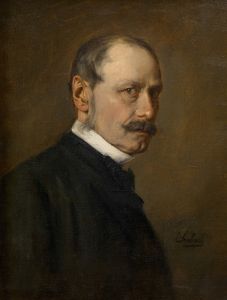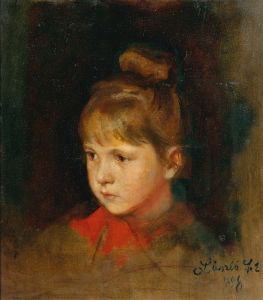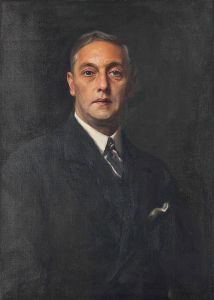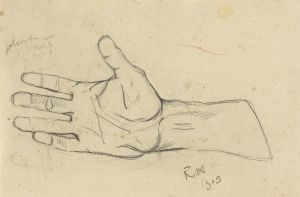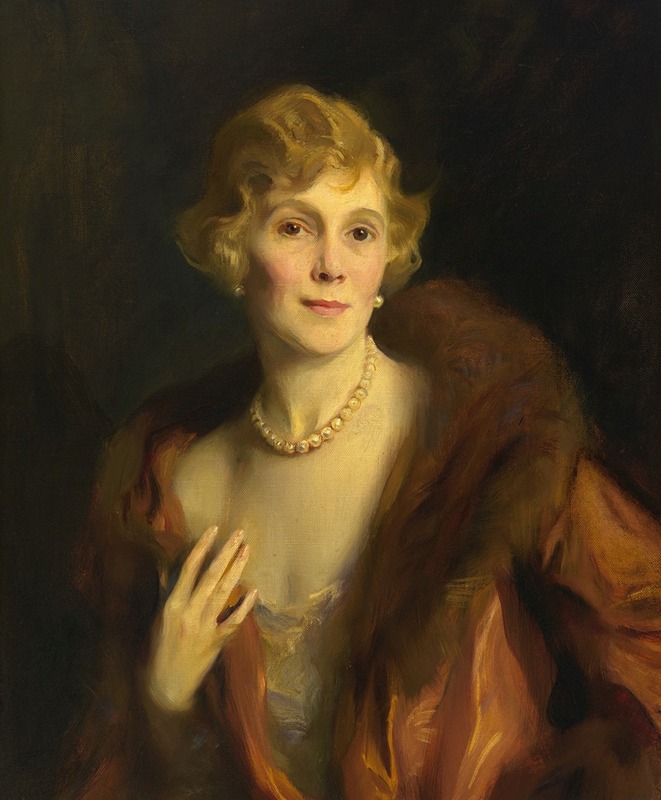
Pauline Morton Sabin
A hand-painted replica of Philip Alexius de László’s masterpiece Pauline Morton Sabin, meticulously crafted by professional artists to capture the true essence of the original. Each piece is created with museum-quality canvas and rare mineral pigments, carefully painted by experienced artists with delicate brushstrokes and rich, layered colors to perfectly recreate the texture of the original artwork. Unlike machine-printed reproductions, this hand-painted version brings the painting to life, infused with the artist’s emotions and skill in every stroke. Whether for personal collection or home decoration, it instantly elevates the artistic atmosphere of any space.
Pauline Morton Sabin by Philip Alexius de László is a portrait painting created by the renowned Anglo-Hungarian artist Philip Alexius de László. De László was a prominent portrait painter in the early 20th century, known for his ability to capture the essence and character of his subjects with remarkable detail and sensitivity. His works often featured members of high society, royalty, and influential figures of his time.
Pauline Morton Sabin, the subject of this portrait, was a notable American socialite and political figure. Born on April 23, 1887, in Chicago, Illinois, she was the daughter of Paul Morton, who served as the United States Secretary of the Navy under President Theodore Roosevelt. Pauline Sabin was a prominent figure in her own right, known for her involvement in politics and her advocacy for women's rights and social causes.
The portrait of Pauline Morton Sabin by de László is a testament to her status and influence during her lifetime. De László's skillful use of color, light, and composition highlights Sabin's elegance and poise, capturing her as a figure of sophistication and authority. The painting reflects the style and techniques that de László was celebrated for, with a focus on realism and attention to detail.
Pauline Sabin is perhaps best known for her role in the movement to repeal Prohibition in the United States. She initially supported Prohibition but later became a leading advocate for its repeal, arguing that it led to increased crime and corruption. In 1929, she founded the Women's Organization for National Prohibition Reform (WONPR), which played a significant role in the eventual repeal of the 18th Amendment in 1933. Her efforts in this movement were instrumental in changing public opinion and influencing legislative action.
The portrait by de László not only captures Sabin's physical likeness but also serves as a representation of her social and political significance. It is a reflection of her dynamic personality and her contributions to American society during a transformative period in history.
Philip Alexius de László's portraits are highly regarded for their ability to convey the character and status of their subjects, and the painting of Pauline Morton Sabin is no exception. It stands as a historical artifact that offers insight into the life of a woman who played a pivotal role in one of the most significant social movements of the early 20th century.
While specific details about the commission and creation of this particular portrait may not be extensively documented, the work remains an important piece within de László's oeuvre and continues to be appreciated for its artistic and historical value. The portrait of Pauline Morton Sabin by Philip Alexius de László is a notable example of the intersection of art and history, capturing the essence of a woman who left a lasting impact on American society.






